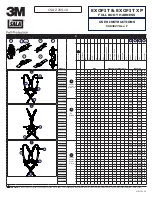
September
2017
Sentinel V SC and RT Operation Manual
Page 112
EAR-Controlled Technology Subject to Restrictions Contained on the Cover Page.
Calibrating the Compass
The compass calibration is a sequence of 12 rotations and tilts used to correct for distortions in the earth’s
magnetic fields caused by permanent magnets or ferromagnetic materials near the Sentinel V. These mag-
netic field distortions, if left uncorrected, will create errors in the heading data from the Sentinel V.
A compass calibration should be conducted at each measurement location, and whenever
the mounting fixture or ancillary equipment such as batteries are changed or rearranged.
The compass calibration for the Sentinel V can be conceptualized as the Sentinel V inside a sphere with
twelve equally spaced points located on the sphere. The twelve points are the data collected during the
compass calibration to orient the compass in different positions relative to the earth’s magnetic field. Each
of the twelve calibration points has a large impact on defining the sphere correctly. The calibration score
(Table 5) is a measure of how well the measured calibration points combine to represent a uniform and
complete sphere.
Figure 58.
Calibrating the Compass
Be aware of the following items:
•
Protect the Sentinel V surfaces from contact or abrasion during calibration. Use the transducer
cover to protect the ADCP transducer faces during calibration if the calibration is in a face down
orientation.
•
Compass calibration should be performed free from ambient magnetic fields.
Choose a calibra-
tion location outside, away from magnetic materials. Nearby steel, iron, magnets, and other mag-
netic fields will degrade the calibration and accuracy, and will provide a bad calibration score.
The exception to this rule is if the system is purposely being calibrated while mounted to a struc-
ture or system, and that structure or system is being rotated / manipulated along with the Senti-
nel V during calibration.
•
Use a wood or plastic test platform at least 1 meter (~3 feet) high to move away from metal under
the ground.
•
The center of rotation for the twelve calibration points is around the transducer head (and there-
fore the compass). Try using a plastic cart with the system positioned with the transducer head
above the fixed (non-swiveling) wheels on the cart. This allows you to spin the cart around to
change directions without moving the compass too much around in space.
•
The optimal angle of tilt during the standard compass calibration procedure is approximately
40
to
65
degrees. Less tilt during calibration is acceptable if the Sentinel V is not expected to be ex-
posed to much tilt while deployed. This will be reflected in the z-coverage score.
















































